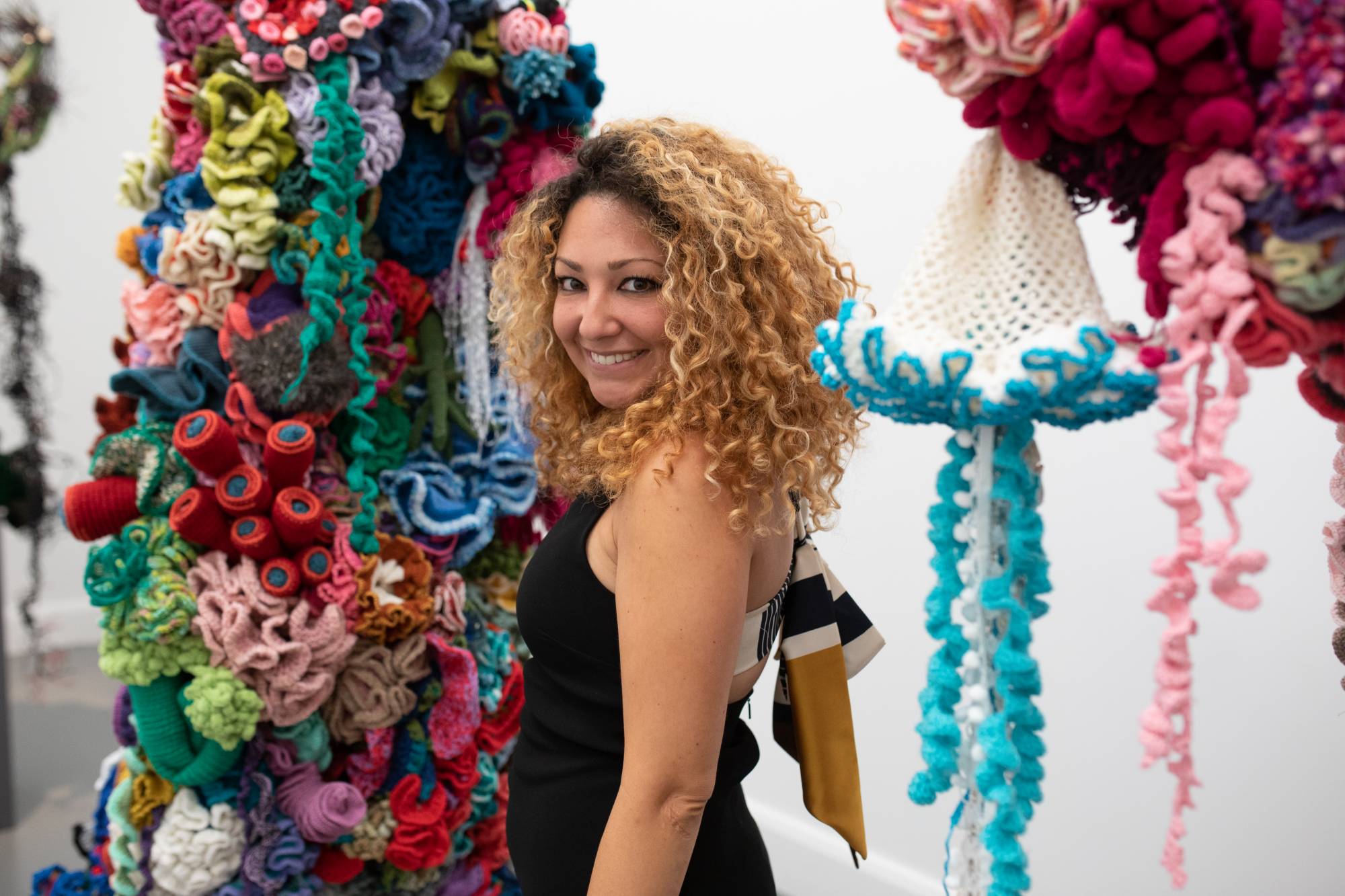The IFF was a participating artist in the exhibition TRADE MARKINGS: Frontier Imaginaries Ed. No. 5.
Curated by Vivian Ziherl, in collaboration with Charles Esche and Annie Fletcher.

Coral Forests from the Eindhoven Satellite Reef
Photo by Marcel van Brucke for the Van AbbemuseumThe IFF was a participating artist in the exhibition TRADE MARKINGS: Frontier Imaginaries Ed. No. 5.
Curated by Vivian Ziherl, in collaboration with Charles Esche and Annie Fletcher.

In April 2018, the Van Abbemuseum in Eindhoven, the Netherlands, presented Trade Markings, the first installation in Europe of the art and research foundation Frontier Imaginaries.
The exhibition was inspired by the world-wide reach of Eindhoven and the local North Brabant region’s trade relations over 600 years. In this multi-modal show, visitors discovered unexpected relations between histories and objects from Afghanistan, Australia, Congo, France, Indonesia, Myanmar, the Netherlands, New Caledonia and Singapore. Three icons of North Brabant commerce — the falcon, the cigar, and the computer chip – appeared and disappeared throughout the exhibition over different times and territories, thus “the story of global trade was brought back home to Eindhoven, focusing on its local consequences.”
Trade Markings was precipitated as a response to the business histories of North Brabant—a province in the south-east of Holland. As the curators write, the ‘globality’ presented here,
“charts out a series of relays in time and geography through three principle commodities; the falcon, the cigar, and the computer chip or ‘wafter’. Throughout feudal Europe, the trained hunting falcon was a highly prized item. Though originating in the Middle East, the centre of the European falconry trade was in Valkenswaard, south-east of Eindhoven. The Van Abbemuseum itself was established by the cigar manufacturer Henri Van Abbe, whose tobacco originated on the plantations of the Dutch East Indies. Today, Eindhoven is part of Brainport, an economic hotspot of the high-tech and computer chip industry. Its supply chains reach to the mines of rare earth metals. Its labour force are globally mobile engineers who produce patents and material product. The falconry trade was connected to feudal power; the cigar factory to the nation state; while the systems that correspond to the computer chip are only just emerging. Trade Markings asks how art and aesthetics can help to grasp such transformations, and places the immediate environment in relation to the world.”
Trade Markings at the Van Abbemuseum included three of the IFF’s Crochet Coral Forest sculptures: Coral Forest: Eryali, Coral Forest: Medusa and Coral Forest: Steno. These sentinels of climate change draw attention to the devastating effects of global commerce on natural environments.
Throughout the exhibition, the local Dutch community crocheted an Eindhoven Satellite Reef, a participatory sculpture indexically connecting the Brabant river, Dommel, with Australia’s Great Barrier Reef. This locally crocheted reef spread from the central hall of the Van Abbemuseum, to other locations in Eindhoven and Brabant, symbolizing how we are all connected with, and to, each other.
Frontier Imaginaries – an ongoing project by curator Vivian Ziherl – was presented at the Van Abbemuseum following prior editions in Australia, Palestine, and New York City, with partner organizations including the Institute of Modern Art (Brisbane), QUT Art Museum (Queensland), the Australian Cinémathèque, Al Ma’mal Foundation, the 3rd Qalandiya International, e-flux, and Columbia University.